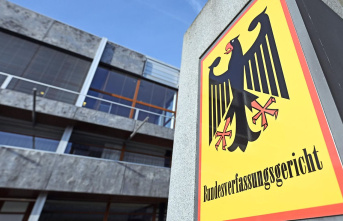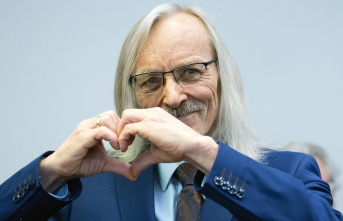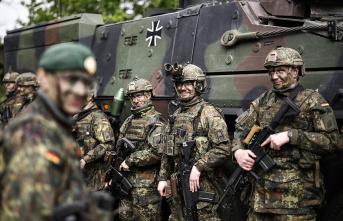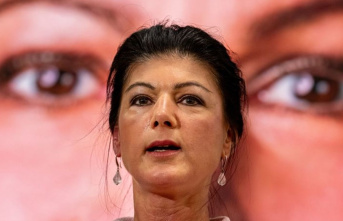The coalition Government between the PSOE and United we Can who will preside over Pedro Sánchez, who has just been sworn in by the Parliament, was something unheard of until now in the Spanish democracy modern. But the Executives-formed by different political parties are mainstream in Europe, both within and outside the EU. And so it has traditionally been driven by the electoral system of many of the countries, very proportional when you translate the percentage of votes in seats, which makes it very difficult to achieve majorities strong, according to Hanspeter Kriesi, political scientist at the European University Institute of Florence. In any case, it is true that things have changed in the last few years, in which the crisis of the great traditional parties and the fragmentation of the political scene with new formations has extended the coalitions in countries that, like Spain, I had had allergy.
In Europe, the Executive of the coalition are the most common. In 1998 was the form of government in the 69% of countries and for 71% of the population (excluded the four countries of the former Yugoslavia).
2008 , there were coalitions in 79.4% of States and for 74% of the inhabitants.
Currently, 28 of the 38 countries considered here are governed by coalition Governments, 73%, counting as the Executive of the PSOE and United we Can in Spain.
With the spaniards, will be more than 421 million europeans are ruled by coalitions, compared to 125 million in countries with Executives drab.
In many cases, Governments of a single party in the minority, with external supports, are the alternative to the coalitions. This is the case in Denmark, Ireland, Portugal, Cyprus, Romania and Moldova.
There are also coalitions that do not reach the majority and need extra support from outside of the Executive: Norway, Slovenia, Belgium, the Czech Republic and Sweden. This is the case of the Government of PSOE and United we Can in Spain.
Center, Right, Left... So divided ideologically on all european Governments.
In the cabinets monotone there is a tie, with five centre-right and many other center-left and left.
In the coalitions, there is a lot more variety and agreements, very difficult to define, but the predominance is conservative, with nine Executives of centre-right and right.
About what is and is not a coalition Government has been much discussed. For example, there are those who considered that France and Hungary do not have it, because the parties that form the Cabinet are not met in the elections, but that reached agreements before. However, for this report, from the indications of various specialists, it has followed the following criteria: is a coalition of the Executive composed of ministers from two or more parties with independent political entity, that is, with parliamentary groups on their own or, as in the case of Poland, there is a explicit agreement and a formal coalition.
it Is true that France is a more complicated case of locate, by its presidential system, because the party of Emmanuel Macron (LRME) has a majority sufficiently loose in the Parliament without having to add up the seats of its partner MoDem and because the country has a long history of Governments, ministers of different parties, without implying the support of your formations to the Executive. However, what is certain is that in the current Cabinet of Édouard Philippe are members of the LRME and MoDem, formations that were presented together at the general elections of 2017, but they remain distinct groups in the National Assembly.
is a different matter, within the huge list of nuances of the Executives multicolor, which seem more or less who governs as in Spain. For example, have obvious differences with those of Belgium, Bosnia and Switzerland, whose systems are designed to integrate into the Government representatives of different communities, geographic, language, or ethnic and, therefore, pushing inevitably to the management party. In other cases, such as in Serbia, the winner of the last election, the Progressive Party, could have governed alone, but decided to keep in the Cabinet to members of the Socialist Party, his partner in previous coalition Governments.
however, there is also similar. For example, the Executives of Slovenia, Czech Republic, Sweden and Norway are also in the minority in parliament despite having joined the forces of several parties, so they need to support extra to take forward their initiatives (add Belgium to the list, even though it is a never-ending Government functions). In two other Cabinets, those of Finland and Iceland, there are also representatives of formations to the left of the social democrats.
Fragmentation and labeling ideological slippery
In reality, in a continent with an abundance of coalitions of all kinds from so long ago, the great change represented by the new Spanish Government is that the Executive multiparty are reaching countries with little or no tradition with that format. So include professors Thomas Saalfeld, University of Bamberg, in Germany, and Enrico Calossi, University of Pisa, which included in that payroll cases in the Uk in 2010 (with a Cabinet of conservatives and liberaldemócratas) and Greece in 2015 (with the agreement of left and nationalists).
What has happened in the last decade for this to take place? The economic crisis linked to the crisis of identity of the two great european political families —the Popular Party and the Socialists— in a context of disenchantment and lack of alternatives, opened some huge holes for those who sneaked new games or revived other, rejuvenated and with new impulses. And many of them have emerged from the margins more ends of the political stage.
This has been, according to experts explain, the det more clear of a fragmentation that has occurred many times results are surprising. So, beyond the great collation between the two major european families of conservatives and progressives represented still, although barely, in Germany, the researcher of the Center for Information and Documentation International in Barcelona (CIDOB), Carme Colomina talks about “coalitions against nature”. Put the examples of Slovakia, where the social democrats have been aligned with the extreme right-wing nationalist” and Estonia, in which Executive coexist a centre party “of the european group of [French president Emmanuel] Macron” with “a force which belongs to the group of Marine Le Pen, leader of the extreme French right.
Sport is, without doubt, the Government party in Italy, the movements were firstregulation 5 Stars rum-in coalition with the populist right-wing League of Matteo Salvini and now with the center-left. And it also deserves mention in this section Iceland, where a “first minister of the extreme left” governs “coalition of the clamp with the right-wing”, according to the description made by this newspaper in an editorial.
The following tool allows you to explore the complex european setting through the shapes and colors current of each Government:
In this context of fragmentation, extremes, labels that no longer serve and growing needs of agreements are multi-party (in addition to the coalitions, we would have to add that six of the 10 unique Governments alone are in the minority), the big question is whether Europe is condemned to political instability. “If we start from the basis that the coalition is instability, yes, but it doesn't have to be that way”, says Colomina. And adds: “I Believe that the instability lies not in the coalition, but in how it has fragmented the landscape and what forces have emerged to fill these gaps left by the crisis of the traditional parties. But that is also in evolution.”
For the moment, the impression of the researcher is that the growing need for agreements multicolor “has ended up favoring much more the coalitions of right-wing and has facilitated the populism of the right, which was born traditionally as a vote of protest, of disillusion, transit to a force of Government.” The matches for this sign are present, thanks to the coalitions, in addition to Slovakia and Estonia, the Governments of Latvia, Bulgaria, and Norway. Are also, taking into account the particularities of your system, in Switzerland, as the party with the most votes; and, although with nuances, many analysts placed at this end political parties leading Governments of Hungary (Fidesz) and Poland (PiS).
CREDITS:
Writing and coordination: J. A. Aunión
editing and Formatting: Mariano Zafra and Guiomar of the Be
Infographic: Luis Sevillano and Mariano Zafra
METHODOLOGY AND SOURCES:
To develop this report, have provided information and analysis to journalists of the International section of THE COUNTRY Andrea Rizzi, Belen Dominguez Cebrian, Paula Chouza, Antonio Pita, Sara Velert and Maria Antonia Sanchez-Vallejo , as well as the correspondents Marc Bassets (Paris) and Daniel Verdú (Rome). For example, have helped to fix the payroll of the 38 countries analysed (for which it has been excluded to Turkey, Russia, Ukraine and Belarus, to consider that are beyond the limits of a logical comparison), and to set the profiles as ideological as much of Governments as of each of the parties that make it up.
they have Also served to contrast those profiles, as well as the rest of the data past and present, the website of the Center for Information and Documentation International in Barcelona (CIDOB), the publication Parties and Elections in Europe, the databases of the European Election, the Norwegian centre for research, NSD, and Parliaments and Governments, driven by two academics from the University of Bremen, as well as the observatory on political parties and Governments of the University of Nottingham. Also have given a hand to delineate what is considered an Executive of coalition teachers Josep M. Reniu (University of Barcelona), Catherine Moury (University of Nova Lisbon), Marc Debuss (Mannheim), Jae-Jae Spoon (Pittsburgh) and Andrea Pedrazzani (Milan). The population figures of the countries are taken from the european statistics office, Eurostat.
click on the photo Date Of Update: 07 January 2020, 15:00










